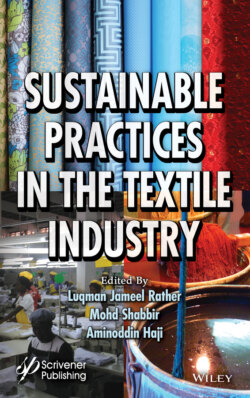Читать книгу Sustainable Practices in the Textile Industry - Группа авторов - Страница 43
1.13.1 Overview
ОглавлениеGlobalization of the world market encouraged the textile industries for large scale production and application of synthetic dyes. These dyes are non-degradable, complex in nature, and a major reason of environmental contamination and serious public health concern. All above research investigations highlighted the impact of environmental, contamination and health hazards of flora, fauna and human beings by enormous use of synthetic dyes. Generally, the long list of synthetic dyes are toxic to humans and environment. In this discussion only three examples of dyes are given here with research evidences as Sudan I, Basic Red 9 and Crystal Violet dye to show their impact on organisms and ecological balance. Many scientists investigated the harmful effect in micro and macro-organisms as well as human beings to be aware of the production, exposure and disposal of these dyes. The synthetic dyes and their effluent discharge are responsible for little danger of skin irritation to cancer of different body parts. During textile processing, inefficiencies in dyeing result in large amount of the dye stuff being directly lost to the wastewater which ultimately finds its way into the environment. This is the picture of most of the developing countries. Approximately 10–15% dyes are released into environment during dyeing process making the effluent highly colored, unpleasant and toxic. As far as human health and environmental hazards are concerned, important prerequisites for risk should be assessed. Nowadays authorities, scientists and general public is aware to potential risk of production and exposure of synthetic dyes. Textile industries are liable to establish the treatment plants for wastewater before being disposed into the environment. But efficiency of treatment plants, honesty of workers, reliability of industry and implementation by government affect the extent of residual amounts reach to the environment. Export demands associated with low cost labor prevalent in India; determine the existence of small-scale textile factories that clandestinely release toxic dyes into water bodies [129].
The effluent disposal of synthetic dyes in water resources causes bio magnification, effects aquatic life where toxic chemicals enter in their bodies later goes to humans via food chain. Another bitter example of wastewater release from dyeing industry is their uses in irrigation by poor, illiterate, innocent farmers in agriculture enable the harmful chemicals of synthetic dyes reach to both animals and human beings through food chains.
